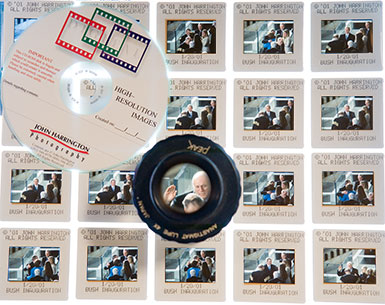 Consider the friendly photo editor.
Consider the friendly photo editor.
They are the ones who fought for you, the photographer, so that you didn't have to be presented with a WMFH agreement. They fought for you to be paid a fair rate, and you didn't even know it.
Sometimes, they are upfront with you, and tell you that, while they know that their approved rate is low, that it is perfectly acceptable to bill for every piece of equipment as rental, since you either rented it yourself, or incurred the expense of owning it.
In some instances, these photo editors will direct you to bill prep days. They will find ways for you to arrive at their required line item maximum rates, but where your bottom line is what you wanted it to be in the first place.
Are these photo editors (the ones who tell you to hike your rate in other ways) helpful? Yes, in a way. No, in another.
For the "Yes" side, we suggest, it's the bottom line that matters. If what the publication is willing to pay equals what you want to be paid, then does it really matter how that number is arrived at? Many photographers just list:
But what about this:
- Assignment Fee - $1,000.
- Lighting Rental - $ 500.
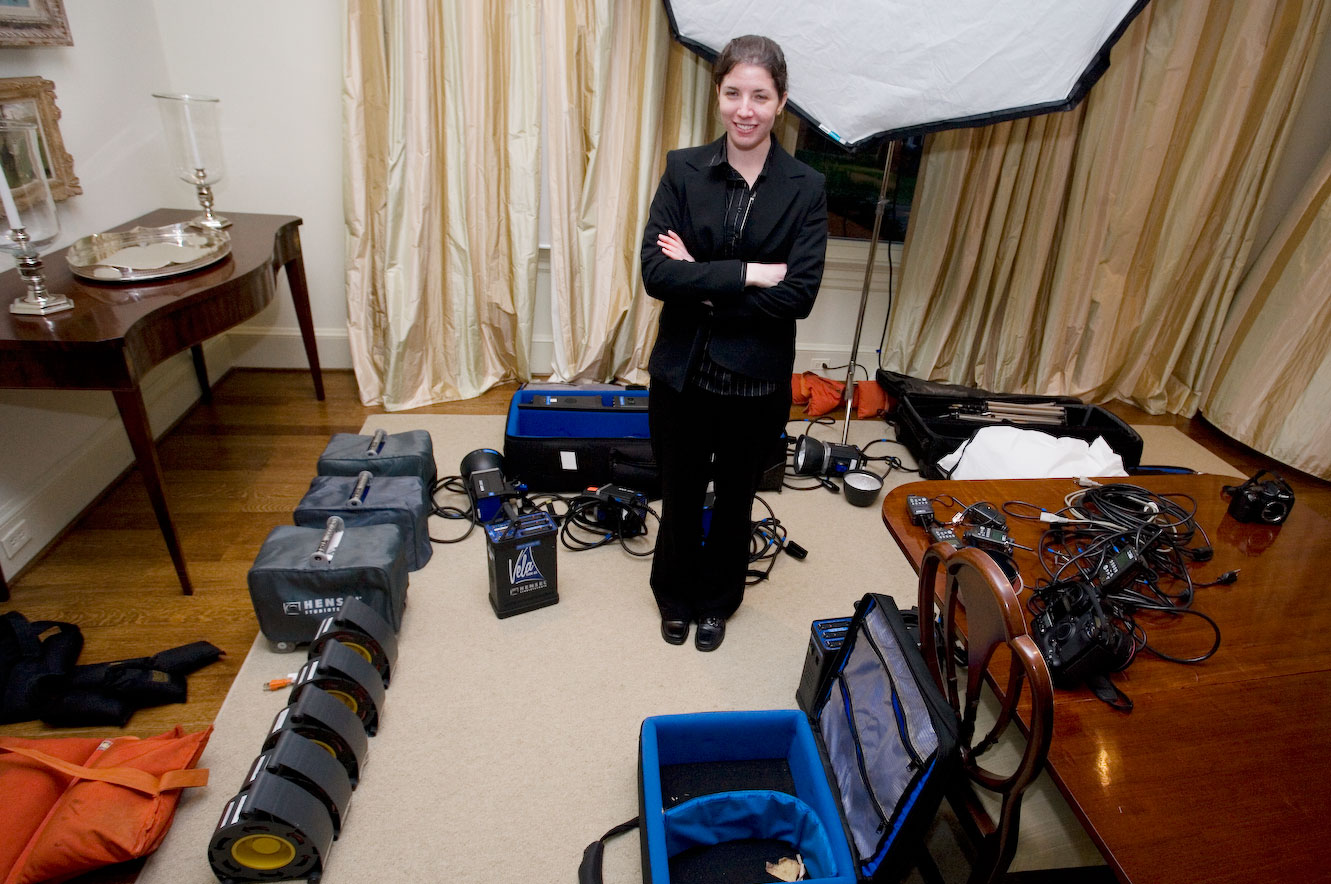
Are we just assuming that the photo editor wouldn't pay that? That they assume we own the equipment? Isn't this a fair way to approach it? Some shoots are more complicated, and require more equipment, so this makes sense.
Yet, many photographers will trot out what amounts to $1k in equipment rental, and do the assignment for $750. I think that, when a good dialog exists between photographer and assigning editor, everything can be fairly worked out, for the most part.
Often, when I am speaking with a photo editor, and I ask "What budget are you trying to work within?", and following the answer, my next question is "are you including expenses, like an assistant, and equipment, post production, and so on, in that figure, or is that 'plus expenses'", and their answers are evenly split. Some say "that's including expenses", or "that's plus expenses", or, "that's plus expenses, but don't go over $X." It just depends upon how they prefer to outline the assignment.
Through this dialog, we can learn if it's a reasonable request, or not. Sometimes though, even the friendly photo editor does need a little help on this.
Consider now, the "No" side. The argument that advising you to bill for prep days, to bill for extra equipment, for a travel day when it really didn't apply, etc means that they are not completely friendly. They absolutely mean well. However, the "Yes" side is somewhat of a
Machiavellian approach to assigning photography. The idea that the ends (i.e. bottom line is all that matters) justify the means. Here, for the suggestion that the

photo editor is not friendly (but are well meaning I again want to emphasize) the ends should not be justified by the means. The PE should be given the leeway to sign off on whatever the specific line items are, rather than be subject to the bean counters telling them that X, Y, or Z is what is paid. Yes, yes, I know. This is supposed to be optimal, but it's not really realistic. Or is it? Is it fair? I think that if there is a range of fees, and the PE advises you that it is "plus expenses, including equipment", then I think that would work.
For me, and I think this is the best way, is to ask "plus expenses - assistant, lighting rental?" And if they say yes, then we're all set. If they say "oh, that's including everyting", then I need to see if that's fair when I add everything up. This takes the onous off of the PE, and back on us, to ask the right questions.
Please post your comments by clicking the link below. If you've got questions, please pose them in our
Photo Business Forum Flickr Group Discussion Threads.
[More: Full Post and Comments]
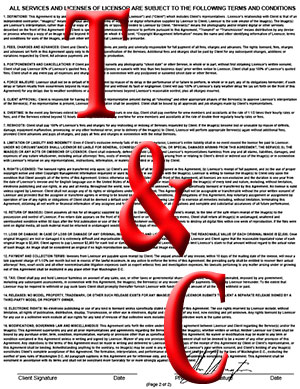 The Question comes in often enough...I need a contract, or I don't understand how to put a contract together. Well, here's my solution: I will deconstruct my original contract, term-by-term, and parse what each piece of it means. Sometimes in excruciatingly painful detail. For those of you who don't know how to write them, well, this is a primer. For those of you who do, it's a nice refresher.
The Question comes in often enough...I need a contract, or I don't understand how to put a contract together. Well, here's my solution: I will deconstruct my original contract, term-by-term, and parse what each piece of it means. Sometimes in excruciatingly painful detail. For those of you who don't know how to write them, well, this is a primer. For those of you who do, it's a nice refresher. Consider the friendly photo editor.
Consider the friendly photo editor. Are we just assuming that the photo editor wouldn't pay that? That they assume we own the equipment? Isn't this a fair way to approach it? Some shoots are more complicated, and require more equipment, so this makes sense.
Are we just assuming that the photo editor wouldn't pay that? That they assume we own the equipment? Isn't this a fair way to approach it? Some shoots are more complicated, and require more equipment, so this makes sense.  photo editor is not friendly (but are well meaning I again want to emphasize) the ends should not be justified by the means. The PE should be given the leeway to sign off on whatever the specific line items are, rather than be subject to the bean counters telling them that X, Y, or Z is what is paid. Yes, yes, I know. This is supposed to be optimal, but it's not really realistic. Or is it? Is it fair? I think that if there is a range of fees, and the PE advises you that it is "plus expenses, including equipment", then I think that would work.
photo editor is not friendly (but are well meaning I again want to emphasize) the ends should not be justified by the means. The PE should be given the leeway to sign off on whatever the specific line items are, rather than be subject to the bean counters telling them that X, Y, or Z is what is paid. Yes, yes, I know. This is supposed to be optimal, but it's not really realistic. Or is it? Is it fair? I think that if there is a range of fees, and the PE advises you that it is "plus expenses, including equipment", then I think that would work.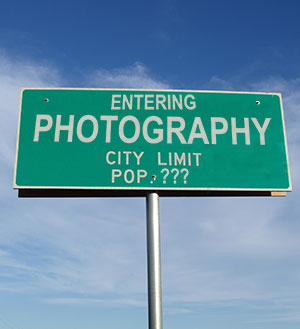 So, the question came in "How do I work as a semi-professional photographer without ruining the livelihoods of those who do it full time?"
So, the question came in "How do I work as a semi-professional photographer without ruining the livelihoods of those who do it full time?"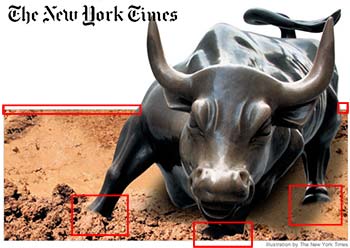 Ok, you know you're in trouble when the blog Gawker, Manhattan's gossip blog
Ok, you know you're in trouble when the blog Gawker, Manhattan's gossip blog  it seems they started with their art department and got someone from elementary school to do the work for them. I mean, look at that to the left. That's just laughable. And look at the line where the sand hits the white area above? I mean, this MIGHT fly if it were a thumbnail, but heck, it plays as a 600px by 430px image. And look at this, to the right....
it seems they started with their art department and got someone from elementary school to do the work for them. I mean, look at that to the left. That's just laughable. And look at the line where the sand hits the white area above? I mean, this MIGHT fly if it were a thumbnail, but heck, it plays as a 600px by 430px image. And look at this, to the right.... the "artist" didn't even bother to feather this foot! I have to say, I expect more from the New York Times.
the "artist" didn't even bother to feather this foot! I have to say, I expect more from the New York Times. Boy, whoever said it couldn't get worse didn't have a grasp on reality. Doritos sponsored a contest to create a commercial in which the winner gets theirs run during the Superbowl, which cost Doritos $2 million dollars. How much does
Boy, whoever said it couldn't get worse didn't have a grasp on reality. Doritos sponsored a contest to create a commercial in which the winner gets theirs run during the Superbowl, which cost Doritos $2 million dollars. How much does  Ok, so, how's about this? Think iStockphoto's going to do well? Well, think again. The
Ok, so, how's about this? Think iStockphoto's going to do well? Well, think again. The  The Wasington Post reports today that the New York Times profits are down on the value of the Boston Globe, awash in red ink, and they are citing "company plans to save up to $75 million in 2007 through cutbacks and outsourcing." What does that mean? They are cutting costs on the backs of staffers by hiring more freelancers at a pittance of the pay they should be getting. Martin Baron, Globe editor does not expect to eliminate more jobs during 2007, nor is the paper for sale. If I believe no more jobs will be cut, then how about that Brooklyn Bridge? Selling that too are we?
The Wasington Post reports today that the New York Times profits are down on the value of the Boston Globe, awash in red ink, and they are citing "company plans to save up to $75 million in 2007 through cutbacks and outsourcing." What does that mean? They are cutting costs on the backs of staffers by hiring more freelancers at a pittance of the pay they should be getting. Martin Baron, Globe editor does not expect to eliminate more jobs during 2007, nor is the paper for sale. If I believe no more jobs will be cut, then how about that Brooklyn Bridge? Selling that too are we?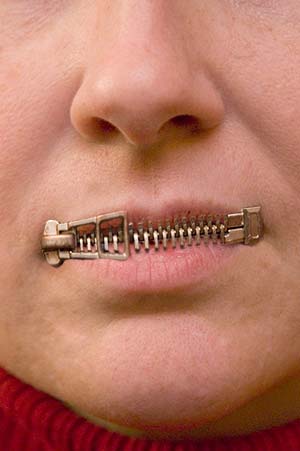 This has been a problem kicking around for some time, and I'm finally pissed about it. What is it? It's assistants shooting their mouths off about photographer's proprietary information, things they see and should just keep their mouths zipped about. The latest example is someone who needs a swift kick in the pants, and has (supposedly) given enough information that it would be very easy to narrow down exactly who he is. This is the example of someone who supposedly worked for Annie Liebovitz as a 5th assistant (and that person's job is to get coffee and hold the door open that low on the totem pole) and spied the (again, supposedly) new Canon camera. First, I know a little about how camera companies show off as-yet-unreleased camera bodies, and it more centers around the old body with a new chip and computer inside than it does blaring the new naming nomenclature on the front. Second, who is really this dumb when doing this as to reveal WHO they worked for and on what shoots? Are they dropping her name so as to provide some validity as we all say "oh yeah, she probably would be someone they'd show it to and get her input on, so it must be true!" all the while lying about actually seeing it in the first place?
This has been a problem kicking around for some time, and I'm finally pissed about it. What is it? It's assistants shooting their mouths off about photographer's proprietary information, things they see and should just keep their mouths zipped about. The latest example is someone who needs a swift kick in the pants, and has (supposedly) given enough information that it would be very easy to narrow down exactly who he is. This is the example of someone who supposedly worked for Annie Liebovitz as a 5th assistant (and that person's job is to get coffee and hold the door open that low on the totem pole) and spied the (again, supposedly) new Canon camera. First, I know a little about how camera companies show off as-yet-unreleased camera bodies, and it more centers around the old body with a new chip and computer inside than it does blaring the new naming nomenclature on the front. Second, who is really this dumb when doing this as to reveal WHO they worked for and on what shoots? Are they dropping her name so as to provide some validity as we all say "oh yeah, she probably would be someone they'd show it to and get her input on, so it must be true!" all the while lying about actually seeing it in the first place?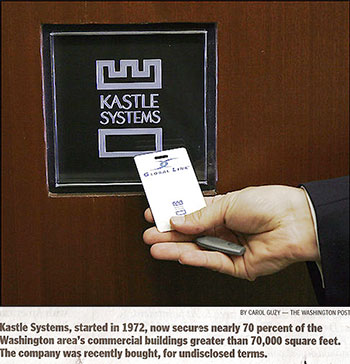 This is a remarkable photograph of a Kastle keycard being used at a Kastle wall panel. The photograph was published on the front page of yesterday's Washington Post Business Section, and the story continued on into the inside of the paper, where another photograph appeared after the jump. At first blush, it appears simple, ordinary, and otherwise posed.
This is a remarkable photograph of a Kastle keycard being used at a Kastle wall panel. The photograph was published on the front page of yesterday's Washington Post Business Section, and the story continued on into the inside of the paper, where another photograph appeared after the jump. At first blush, it appears simple, ordinary, and otherwise posed.  Similarly, the inside photo is comparable, of two executives standing facing one another in (probably) the lobby of their offices. What is not, however, ordinary, is who took the photographs. The photographer is Carol Guzy, probably the single greatest winner of photographic competitions for as long as I can remember, and an amazing visual communicator, someone who will be remembered past her time for the work she produced. Someone who has traveled the globe documenting famine, suffering, and the triumph of the human spirit.
Similarly, the inside photo is comparable, of two executives standing facing one another in (probably) the lobby of their offices. What is not, however, ordinary, is who took the photographs. The photographer is Carol Guzy, probably the single greatest winner of photographic competitions for as long as I can remember, and an amazing visual communicator, someone who will be remembered past her time for the work she produced. Someone who has traveled the globe documenting famine, suffering, and the triumph of the human spirit. Because it's a part of what all newspaper photographers are called upon to do, document the ordinary from time to time. Not every photograph is an award winner, let alone even viable to enter a contest, nor should they be. Many many photographs taken by many many photographers illustrate a story, sometimes in a very straightforward way. This photograph is remarkable for what is is not, and for the fact that it was a living legend producing the image. It illustrates the point that we all are called upon to produce images that fill the day-in and day-out assignment sheets.
Because it's a part of what all newspaper photographers are called upon to do, document the ordinary from time to time. Not every photograph is an award winner, let alone even viable to enter a contest, nor should they be. Many many photographs taken by many many photographers illustrate a story, sometimes in a very straightforward way. This photograph is remarkable for what is is not, and for the fact that it was a living legend producing the image. It illustrates the point that we all are called upon to produce images that fill the day-in and day-out assignment sheets.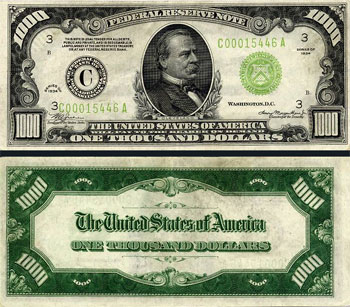 If an image is worth a thousand words, what's $1K get you? Questions. How about $960? Fewer questions, for sure. $960, or $1,020 are figures that fall into a concept that is referred to as
If an image is worth a thousand words, what's $1K get you? Questions. How about $960? Fewer questions, for sure. $960, or $1,020 are figures that fall into a concept that is referred to as 